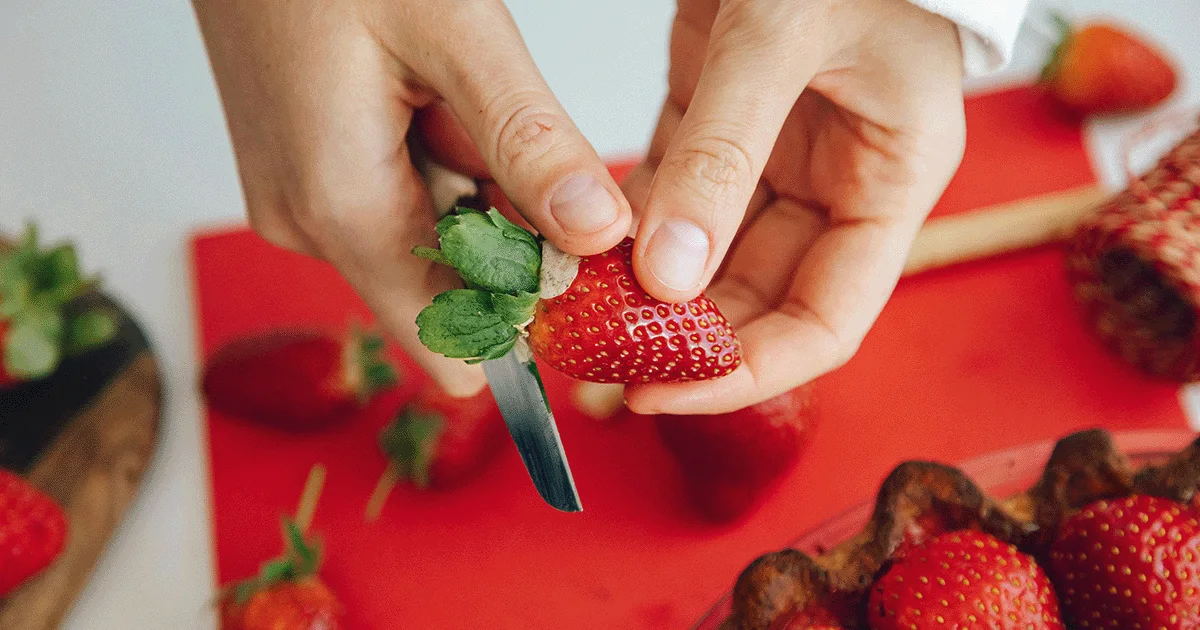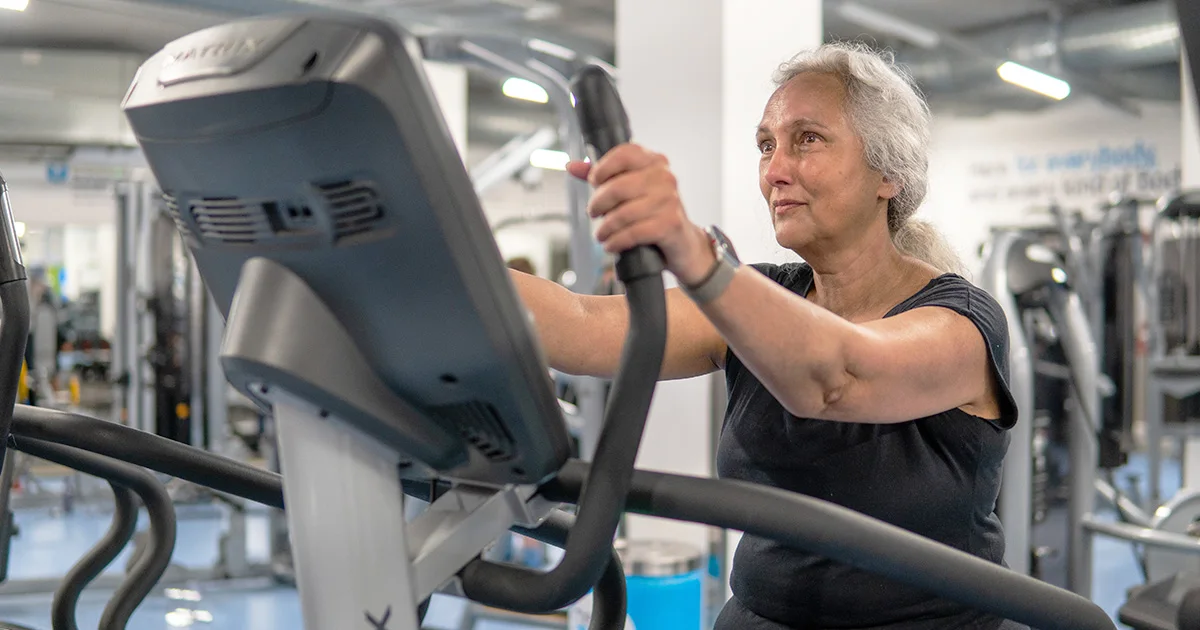Here's what we'll cover
Here's what we'll cover
Here's what we'll cover
Meal prepping is very trendy now, as the 12-million-plus #mealprep hashtags on Instagram can attest. Can the simple act of preparing meals in advance help one lose weight? Not the act itself per se, of course. But if you can’t cook every day and you’re trying to lose weight, taking a few hours a week to meal prep could have huge benefits for your health.
What is meal prepping?
Meal prepping is just what it sounds like—preparing some or all of one’s meals in advance. This activity can take many forms. You might make a large batch of something on Sunday, say a soup or stew, and eat it for the next few dinners. Or you could get elaborate and pre-make individual meals complete with side dishes for every day of the week.
Just because you’re cooking food in advance doesn’t mean it can’t be a great meal. Wander through the storage area of even the fanciest restaurant, and you’d be surprised at just how much of your meal was prepped before you ever made a reservation.
Meal planning for a whole week in advance might strike some people as odd. But not everyone is fortunate enough to have time to cook during the work week. For many people, dinner time just means a delivery app. That’s fine from time to time, of course, but eating out regularly can mean eating a less-than-nutritious diet most of the time.
Studies have shown regular out-of-home eating often correlates with higher caloric intake, higher dietary fat, and lower micronutrients (Lachat, 2012). Keep in mind, “out-of-home eating” includes takeout. It’s not as if that pizza has fewer calories in your living room than in the restaurant.
Having nutritious food at the ready can make a big difference in your health and weight loss goals—and that’s where meal prepping comes in.
Meal prepping for weight loss
As of 2018, 30.3% of American adults were considered overweight, and 42.4% had obesity. That’s up a lot since 2000 when the obesity number stood at 30.5% (Fryar, 2021). As of 2010, poor diet was the number one risk factor for early death or disability in the United States (Murray, 2013).
Research has suggested that the more one eats meals prepared at home, the healthier the fare usually is (Wolfson, 2015). It even lowers the risk of type 2 diabetes (Zong, 2016).
There haven’t been too many studies on preparing food in advance versus preparing it at the time you eat. Still, weekly meal prep can contribute to a healthier lifestyle from what we’ve seen so far.
A recent pilot program had participants meet for a four-hour cooking session on six consecutive Sundays. They prepped healthy weekday lunches and dinners for the following week. Three months after the final session, the number of home-cooked meals they ate had increased dramatically. The average weight loss was about four pounds. Participants were eating healthier as well; lean protein intake increased, while fat and carbohydrate intake decreased. While it was a small study of only ten people, the results were promising (Mendez, 2021).
Prepping for prep
If you’re going to meal prep, there are a few things you’ll need to get ready beforehand.
Have the right containers on hand
First, make sure you have as many meal prep containers as you’ll need for the week. If you’re prepping five dinners and five lunches, that’s ten at least. Invest in a set of reusable glass or plastic containers. Mason jars are great for things you’ll be eating at home and they’re easy to clean. Try to avoid using disposable baggies. They don’t provide a great seal, and single-use plastic is terrible for the environment to boot.
For freezing, plastic is better than glass. Freezer-safe BPA-free plastic that can go from the chill chest to the microwave is your best bet. When freezing, remember that food expands. Always leave some space at the top or you’ll have frozen soup busting through the lid.
Pack food properly
Don’t pack food while it’s still hot. If you move your food right from the pan to a container and put a lid on, it’s going to steam in there. In five minutes, your perfect zucchini stir-fry could be perfectly overcooked mush.
When storing food, refrigerator temperature is of the utmost importance. The FDA recommends refrigerators be kept under 40 degrees Fahrenheit and freezers at or below zero (U.S. Food and Drug Administration, 2021). If your fridge or freezer don’t already have a built-in thermometer, you may want to purchase one to check the temp.
Start with the right equipment
You don’t need any fancy equipment. You can do quite a bit with a saute pan, a pot, and a sheet pan. A pressure cooker or slow cooker may be a great convenience, but isn’t necessary if you don’t have the space. Having a small digital scale is handy for those who need to weigh out ingredients. The most essential piece of equipment for food prepping, though, is your knife.
You’ll hear every chef say that a dull knife is more dangerous than a sharp knife. Simply put, it takes more pressure and time to cut through something with a dull knife (McGorry, 2003). Putting more pressure on a blade makes it more likely to go off course—say, in the direction of a finger. A decent knife that will hold an edge can be the difference between enjoying the process and throwing up one’s hands in frustration.
If you’re not comfortable in the kitchen, taking a class on basic knife skills could help and may even be fun. Even an online tutorial may offer some simple tips that make a big difference.
Healthy meal prep ideas
Before starting any diet plan, you have to know what’s healthy for you. Jumping on the latest paleo low-carb clean eating diet craze may not be the best solution for you. Talk to your healthcare provider or a registered dietitian about weight loss goals, and discuss your individual caloric and nutritional needs. They know more about healthy eating than that guy at your office who won’t stop talking about how he lost twenty pounds by only eating peanut butter and sardines.
Make a plan
Learn the best balance of carbs, veggies, fruits, proteins, and fats for you, and plan each day’s meals accordingly.
Setting up a meal plan with repeated ingredients can save money and reduce waste. For example, you might only use one-quarter of a red onion in one dish. If you only make that one dish, you’ve wasted the rest. But if four plates in your week have it as an ingredient, not only have you not wasted any money, you’ve saved time because you can prep the onion for all at once.
When it’s time to buy ingredients, stick to your shopping list. Buy as much as you need for that week’s meal plan, no more. Research has shown that going into a market with a specific plan results in fewer impulse purchases (Bellini, 2017). Your grocery list is there to help you stay on track, so try to resist any temptations.
Choose nutritious foods
As you’re planning out your meals for the week, try to plan around nutrient-rich foods. These are foods high in essential nutrients, like fiber, vitamins, minerals, and proteins. For health and weight loss, it’s a good idea to try to make foods like vegetables, fruits, whole grains, and lean proteins the bulk of your diet (Drewnowski, 2019).
Healthy recipes can be delicious recipes, but some ingredients may take getting used to. You may think you don’t like brown rice or quinoa, but it’s more likely you’ve just become conditioned to the alternative. Repeated exposure is often all it takes to go from disliking to not merely tolerating but actually liking a food. In one study of the most notoriously picky eaters, children, it took eight or nine exposures to begin enjoying a food. The one exception was the bell pepper, which remained hopelessly undesirable (Lakkakula, 2010).
Meal prepping is very trendy at the moment, and there are hundreds (perhaps thousands) of websites with meal prep recipes for specific diets. If you can’t cook every night and you’re new to this, try prepping just a few meals on the weekend. As you get more comfortable in the kitchen and refine your meal plan, you may find you can knock out a whole week’s worth. As you grow more confident, you might even find you’re having fun doing it.
DISCLAIMER
If you have any medical questions or concerns, please talk to your healthcare provider. The articles on Health Guide are underpinned by peer-reviewed research and information drawn from medical societies and governmental agencies. However, they are not a substitute for professional medical advice, diagnosis, or treatment.
References
Bellini, S., Cardinali, M. G., & Grandi, B. (2017). A structural equation model of impulse buying behaviour in grocery retailing. Journal of Retailing and Consumer Services, 36 , 164–171. doi: 10.1016/j.jretconser.2017.02.001. Retrieved from https://www.sciencedirect.com/science/article/abs/pii/S0969698916302867
Drewnowski, A., Dwyer, J., King, J. C., & Weaver, C. M. (2019). A proposed nutrient density score that includes food groups and nutrients to better align with dietary guidance. Nutrition Reviews, 77 (6), 404–416. doi: 10.1093/nutrit/nuz002. Retrieved from https://www.ncbi.nlm.nih.gov/pmc/articles/PMC6489166/
Fryar, C. D., Carroll, M. D., & Afful, J. (2020). Prevalence of overweight, obesity, and extreme obesity among adults aged 20 and Over: United States, 1960–1962 Through 2017–2018. NCHS Health E-Stats. Retrieved from https://www.cdc.gov/nchs/data/hestat/obesity-adult-17-18/obesity-adult.htm
Lachat, C., Nago, E., Verstraeten, R., Roberfroid, D., Van Camp, J., & Kolsteren, P. (2012). Eating out of home and its association with dietary intake: A systematic review of the evidence. Obesity Reviews: An Official Journal of the International Association for the Study of Obesity, 13 (4), 329–346. doi: 10.1111/j.1467-789X.2011.00953.x. Retrieved from https://pubmed.ncbi.nlm.nih.gov/22106948/
Lakkakula, A., Geaghan, J., Zanovec, M., Pierce, S., & Tuuri, G. (2010). Repeated taste exposure increases liking for vegetables by low-income elementary school children. Appetite, 55 (2), 226–231. doi: 10.1016/j.appet.2010.06.003. Retrieved from https://pubmed.ncbi.nlm.nih.gov/20541572/
McGorry, R. W., Dowd, P. C., & Dempsey, P. G. (2003). Cutting moments and grip forces in meat cutting operations and the effect of knife sharpness. Applied Ergonomics, 34 (4), 375–382. doi: 10.1016/S0003-6870(03)00041-3. Retrieved from https://www.sciencedirect.com/science/article/abs/pii/S0003687003000413
Mendez, S., Kubota, J., Widaman, A. M., & Gieng, J. (2021). Advance quantity meal preparation pilot program improves home-cooked meal consumption, cooking attitudes, and self-efficacy. Journal of Nutrition Education and Behavior , S1499-4046 (21)00001-4. Advance online publication. doi: 10.1016/j.jneb.2020.12.014. Retrieved from https://pubmed.ncbi.nlm.nih.gov/33541769/
Murray, C. J. L., Atkinson, C., Bhalla, K., Birbeck, G., Burstein, R., Chou, D., et al, … U.S. Burden of Disease Collaborators. (2013). The state of US health, 1990-2010: Burden of diseases, injuries, and risk factors. JAMA, 310 (6), 591–608. doi: 10.1001/jama.2013.13805. Retrieved from https://pubmed.ncbi.nlm.nih.gov/23842577/
U. S. Food and Drug Administration (2021) Are you storing food safely? Retrieved from https://www.fda.gov/consumers/consumer-updates/are-you-storing-food-safely
Wolfson, J. A., & Bleich, S. N. (2015). Is cooking at home associated with better diet quality or weight-loss intention? Public Health Nutrition, 18 (8), 1397–1406. doi: 10.1017/S1368980014001943. Retrieved from https://pubmed.ncbi.nlm.nih.gov/25399031/
Zong, G., Eisenberg, D. M., Hu, F. B., & Sun, U. S. Food and Drug Administration (2021) Are you storing food safely? Retrieved from https://www.fda.gov/consumers/consumer-updates/are-you-storing-food-safely Q. (2016). Consumption of meals prepared at home and risk of type 2 diabetes: An analysis of two prospective cohort studies. PLoS Medicine, 13 (7), e1002052. doi: 10.1371/journal.pmed.1002052. Retrieved from https://pubmed.ncbi.nlm.nih.gov/27379673/












